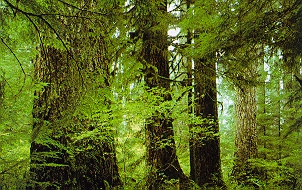A Brief History of Sombrio Beach
Long before European settlers reached Sombrio beach, the first nations people relyed on the region's natural abundance for survival. They ate from over two hundred different plants and animals, and they made about 150 different medicines from the raincoast rich abundance. As the white settlers came into the area, the native people were no longer able to access the traditional south raincoast.
In 1949, logging companies started operating in the region, taking western red cedar, Sitka spruce, western hemlock, and Douglas fir. Through the 1970's and 80's, the Carley company employed 40 men, and cut MacMillan & Bloedell timber at Sombrio. Logs were towed toBC sawmills and pulpmills and products were exported.
Now, logs harvested outside the Jaun De Fuca Park area are shipped to domestic, USA, Pacific Rim, and European markets.

A portion of Sombrio became inhabited by a group of about 50 squatters in the mid 1970's. They lived in the forest until the government forced them out to build the Juan De Fuca trail. All that remains is a lone cabin on the east side, known as surfer's cabin.
In 1994, Timber West, and Western Forest Products donated a 700 hectare strip of coastal land, which includes Sombrio Beach to the government for the building of the Juan De Fuca Provincial Park. However, logging is still a thriving industry in the area. Clearcuts can still be seen in the mountains and valleys directly north of Sombrio beach.